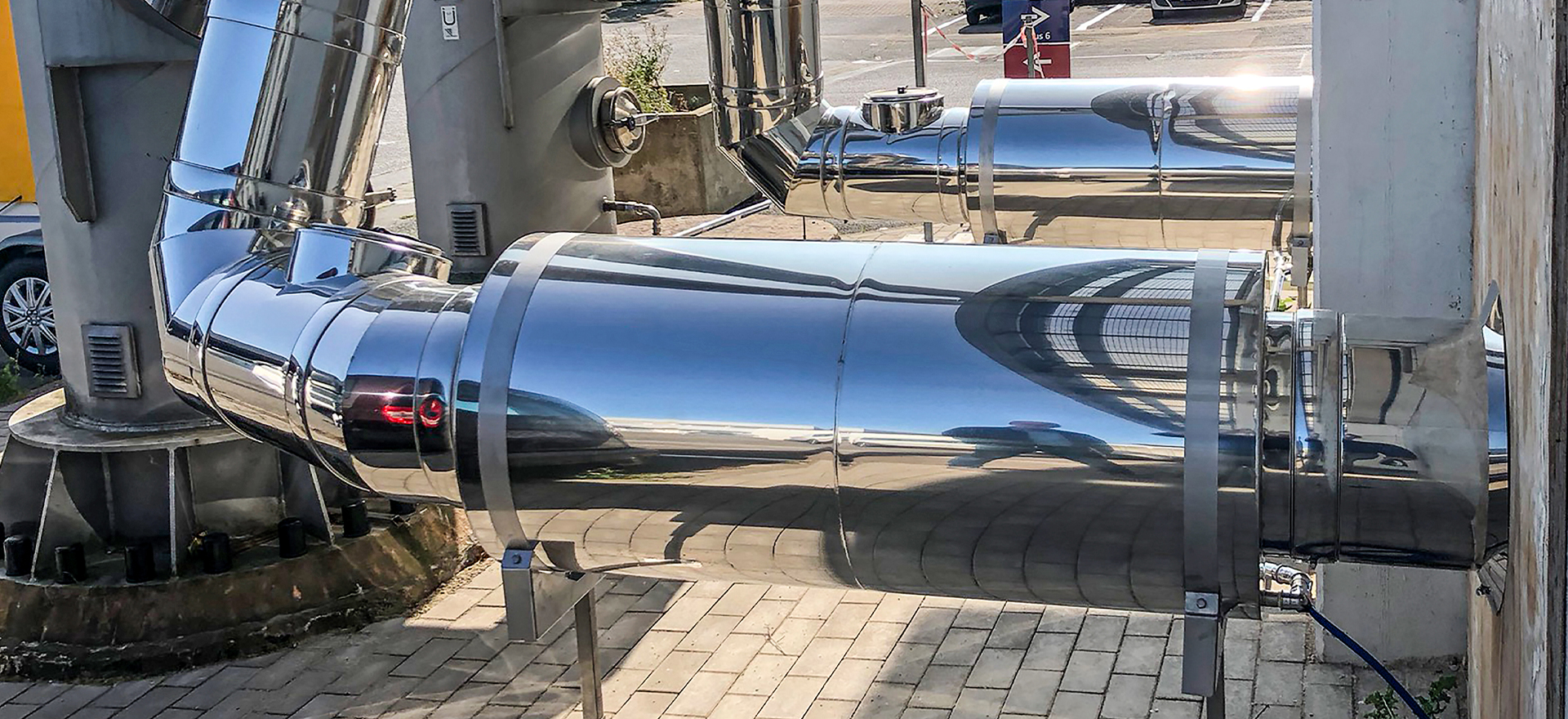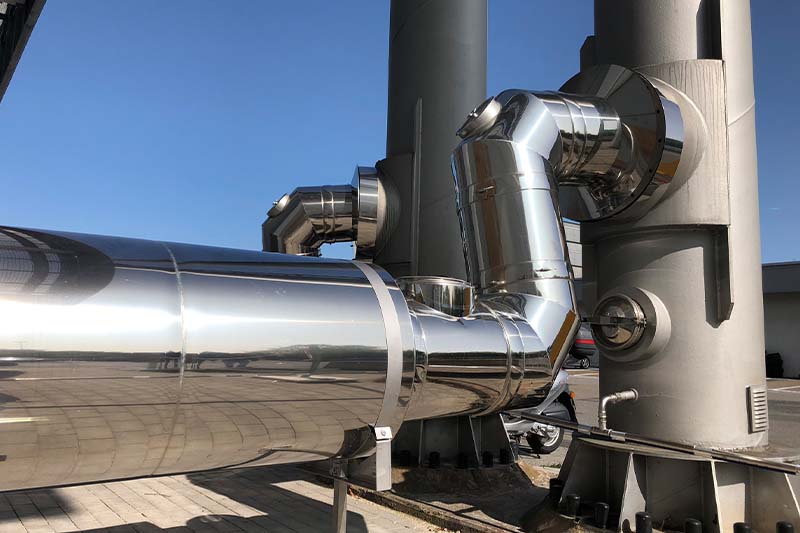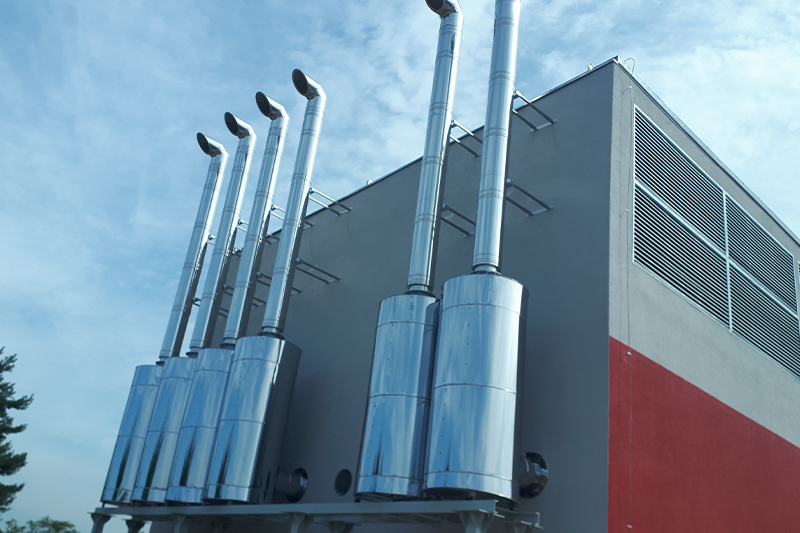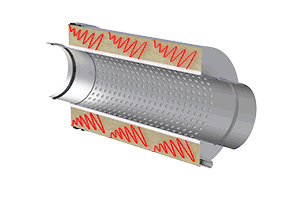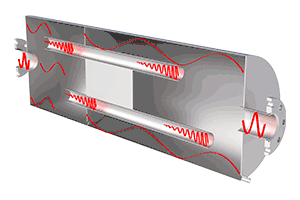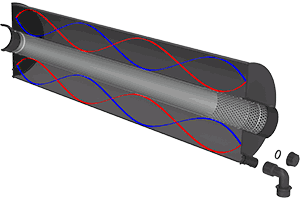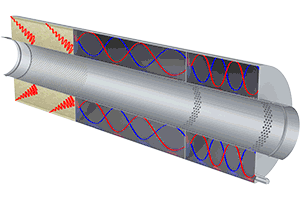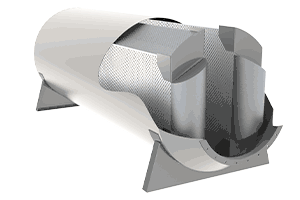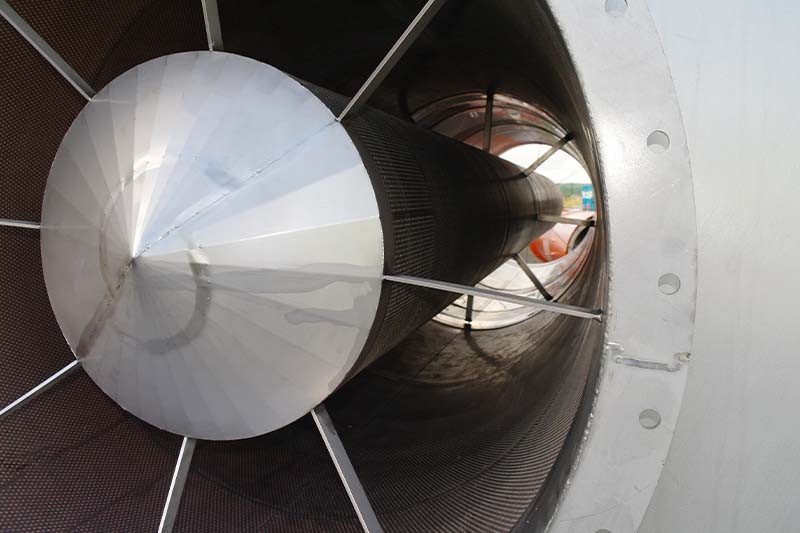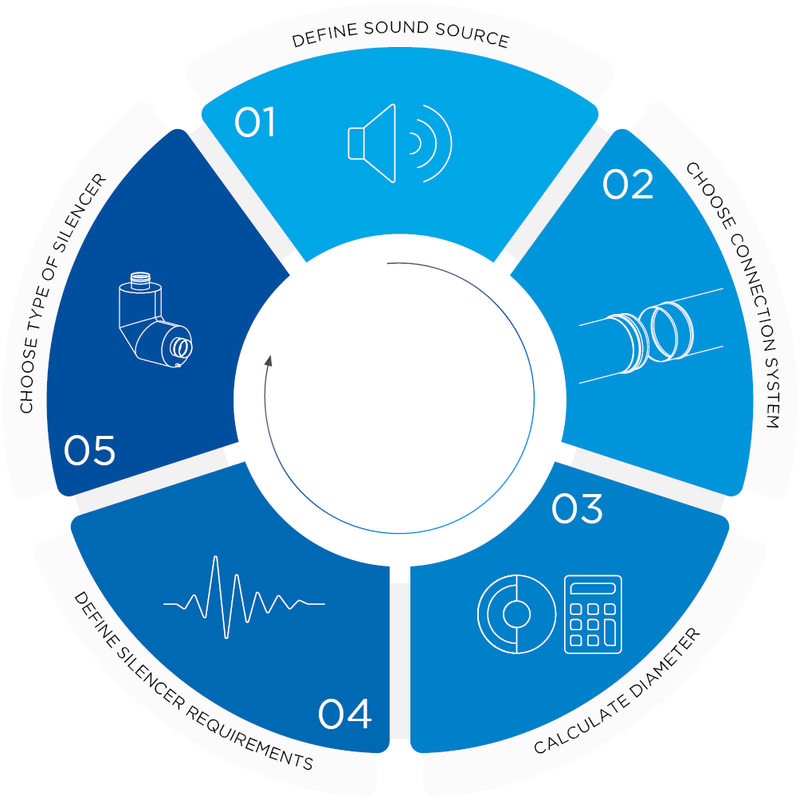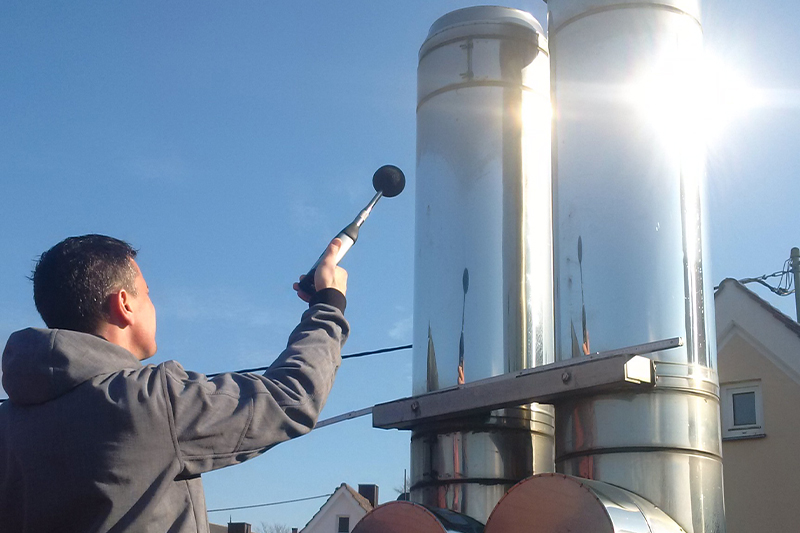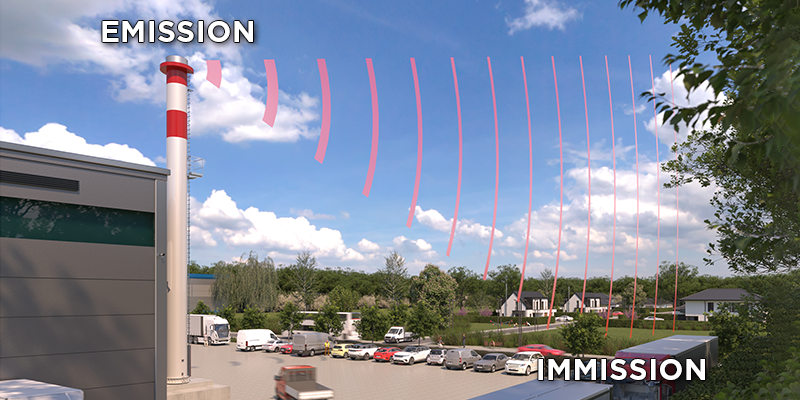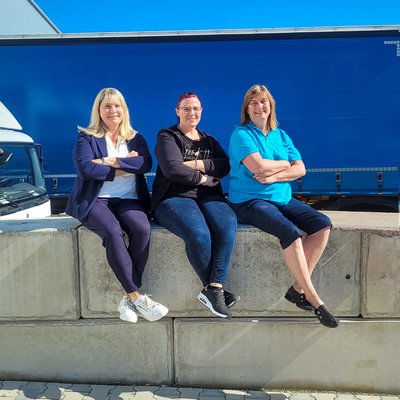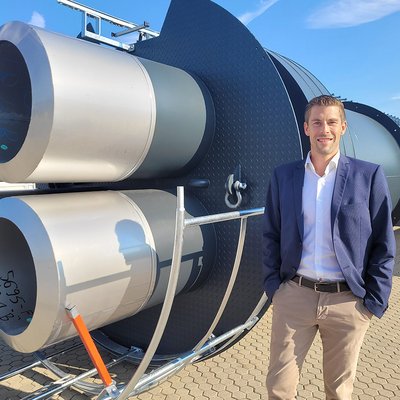Exhaust Silencers
| Frequency Range | Silencer Type | Silencer Series for | ||
|---|---|---|---|---|
| Boilers | CHP | Biomass | ||
| primarily mid- and high-frequency | Absorptive silencer | ASD | AED | AVD |
| primarily low-frequency | Reflection / Resonance silencer | RSD | RED | |
| broadband frequency range | Combined silencer | KSD | KED | |
Boilers
The flue gases generated during the combustion process are released into the environment via the flue gas system. Flame noises from the boiler room as well as the "whining" sound from the fan in condensing boilers can be transmitted. These are typically mid- and high-frequency noises that can be reduced using an absorptive silencer. Especially in newer fan burners, the use of a combined silencer or a pure resonance silencer may be necessary for broader frequency damping.
Combined Heat and Power (CHP) Units / Generators
In combined heat and power (CHP) units and generators, a motor primarily generates electricity, with additional usable heat produced. The motor noise is often noticeable as a low-frequency hum. The specific frequency spectrum and thus the selection of the appropriate silencer type are largely influenced by the number of cylinders and the engine speed.
Biomass Boilers
The combustion of biomass such as wood, pellets, or wood chips is nearly silent. Disruptive, usually mid- to high-frequency noises are caused by integrated fans. Due to the more aggressive composition of the flue gases, biomass boilers are recommended to use an absorptive silencer with a durable glass fiber fabric designed for this purpose.

